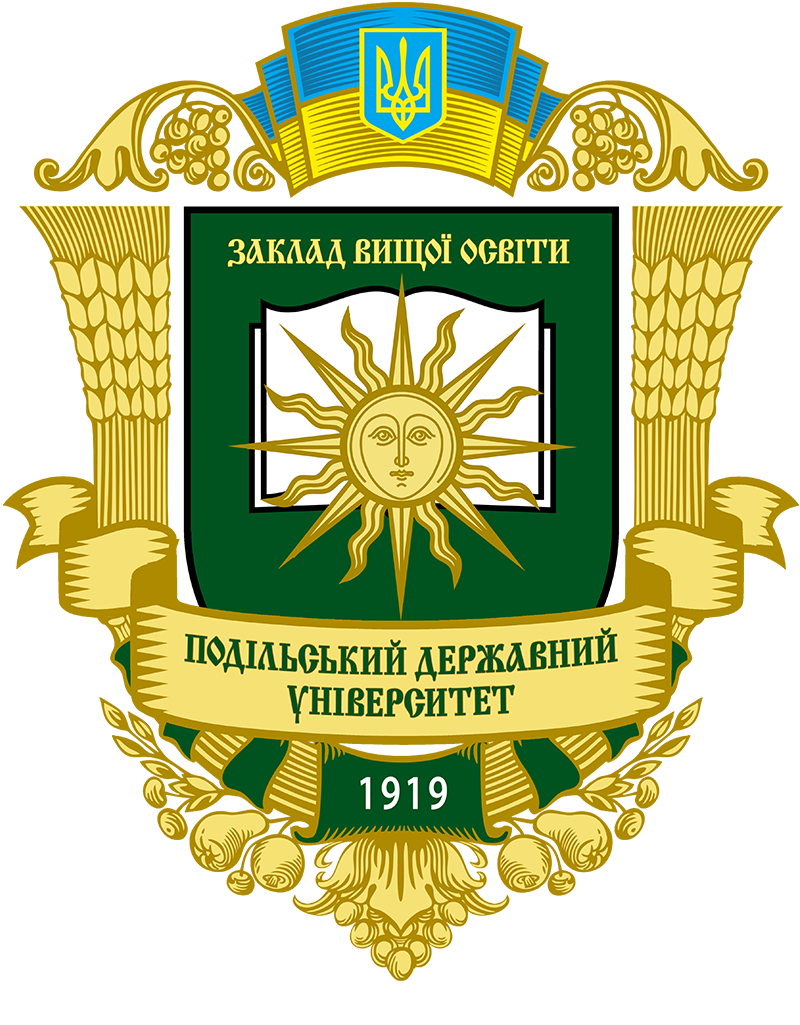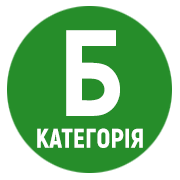IMMUNOBIOLOGICAL REACTIVITY OF COWS WITH CLINICAL INFLAMMATORY PROCESS OF THE MAMMARY GLAND UNDER THE INFLUENCE OF LIPOSOMAL PREPARATION BASED ON ETHYLTHIOSULFANYLATE
DOI:
https://doi.org/10.37406/2706-9052-2024-2.34Keywords:
cow, mastitis, leukocyte profile, liposomal preparation, ethylthiosulfanylate, T- and B-lymphocyte subpopulationsAbstract
Mastitis in cows has a multifactorial nature, which significantly complicates its treatment. One of the factors of mammary gland diseases is bacterial microflora. Given the limited use of antibacterial drugs, it is important to use new alternative antimicrobial agents in the treatment of mastitis. Therefore, the purpose of the study was to determine the effect of a new liposomal drug based on ethylthiosulfanylate on the functional state of immune system factors in cows with clinical mammary inflammation. In the blood of sick cows, an increased number of leukocytes (by 53.3%), pronounced lymphopenia, a decrease in the number of red blood cells and hemoglobin content were found; the content of total protein was 12.1% (p<0.05) lower than in healthy animals. The immune system of sick cows reacts with a decrease in the population of immunocompetent cells. After intramuscular injection of the experimental drug at a dose of 20 ml three times with an interval of 24 hours on the 7th day after the start of treatment, a decrease in the total number of leukocytes by 22.3% and an increase in the content of total protein in the blood serum by 13.4% (p<0.001) were observed. A decrease in the number of neutrophilic granulocytes and an increase in the number of lymphocytes on the 3rd (p<0.05) and 7th day (p<0.001) of the experiment was recorded, indicating the extinction of the inflammatory process. The administration of the studied liposomal preparation to the sick animals contributed to an increase in the number of T-lymphocytes and an increase in their functional activity, especially these changes were expressed on the 7th day after the administration of the drug. For the treatment of animals with catarrhal mastitis, 2–3 injections were sufficient. The therapeutic effect occurred in 48–96 hours and amounted to 89.9%.
References
Вальчук О.А., Столюк В.О. Мастит корів – ефективні шляхи вирішення проблеми. Ветеринарна практика. 2009. № 4. С. 30–33.
Вплив органічного ліпосомального препарату йоду на біохімічні показники крові корів-первісток / І.І. Гевкан та інші. Науково-технічний бюлетень. 2013. № 109 (1). С. 63–69.
Кондрашов М.С. Поширеність мікозного маститу серед дійних корів. Науковий вісник ЛНУВМБТ імені С.З. Ґжицького. 2010. Т. 12. № 3 (45). Ч. 1. С. 99–102.
Лабораторні методи досліджень у біології, тваринництві та ветеринарній медицині / В.В. Влізло, Р.С. Федорук, І.Б. Ратич та ін. ; за ред. В.В. Влізла. Львів, 2012. 759 с.
Масс А.О., Овчаренко Г.В., Васецька А.І. Ефективність діагностики, профілактики та терапії корів, хворих на мастит. Науковий вісник ЛНУВМБТ імені С.З. Ґжицького. 2016. Т. 18. № 1 (65). Ч. 1. С. 101–104.
Понкало І., Ковальчук Н. Активність ензимів антиоксидантного захисту у молозиві корів за дії ліпосомальних препаратів. Вісник Львівського університету. Серія «Біологічна». 2016. Вип. 73. С. 186–190.
Рацький М.І. Гематологічний профіль корів різного рівня продуктивності та їх телят, за дії ліпосомального препарату. Ветеринарна біотехнологія. 2018. № 32 (1). С. 207–211.
Рудик І.А., Даниленко В.П. Селекція молочної худоби за стійкістю до маститу. Збірник наукових праць Вінницького національного аграрного університету. Вінниця, 2011. Вип. 8 (48). С. 54‒58.
Супрович Т.М., Влізло В.В. Використання імуногенетичних маркерів для виявлення корів, резистентних або чутливих до маститів. Біологія тварин. 2013. Т. 15. № 4. С. 119–127.
Characterization and genome sequencing of a novel bacteriophage infecting Streptococcus agalactiae with high similarity to a phage from Streptococcus pyogenes / Q. Bai et al. Archives of virology. 2013. Vol. 158 (8). P. 1733–1741. DOI: https://doi.org/10.1007/s00705-013-1667-x.
Brahim N. Review on mastitis and its economic effect. Canadian Journal of Scientific Research. 2017. Vol. (1). P. 13–22. doi : 10.5829/idosi.cjsr.2017.13.22.
Cheng W., Han S.G. Bovine mastitis: risk factors, therapeutic strategies, and alternative treatments – A review. Asian-Australasian journal of animal sciences. 2020. Vol. 33 (11). P. 1699–1713. DOI: https://doi.org/10.5713/ajas.20.0156.
Influence of liposomal drug on the intensity of proteins oxide modification processes in subclinical mastitis of cows / V.A. Chepurna et al. The Animal Biology. 2021. № 23 (2). P. 3–7. doi : 10.15407/animbiol23.02.003.
Chouhan S., Sharma K., Guleria S. Antimicrobial Activity of Some Essential Oils – Present Status and Future Perspectives. Medicines. 2017. Vol. 4 (3). Р. 58. doi : https://doi.org/10.3390/ medicines4030058.
Garcia S N., Osburn B.I., Cullor J.S. A one health perspective on dairy production and dairy food safety. One health (Amsterdam, Netherlands). 2019. № 7. doi : https://doi.org/10.1016/j.onehlt.2019.100086.
Bovine Mastitis and Its Therapeutic Strategy Doing Antibiotic Sensitivity Test / M.K. Hossain et al. Austin Journal of Veterinary Science & Animal Husbandry. 2017. Vol. 4 (1). Р. 1030.
Huan Y., Kong Q., Mou H. Antimicrobial peptides: classification, design, application and research progress in multiple fields. Frontiers in microbiology. 2020. № 11. doi : https://doi.org/10.3389/fmicb.2020.582779.
Bacteriophage ΦSA012 has a broad host range against Staphylococcus aureus and effective lytic capacity in a mouse mastitis model / H. Iwano et al. Biology. 2018. Vol. 7 (1). P. 8. doi : https://doi.org/10.3390/biology7010008.
Dufour SInvited review Incidence, risk factors, and effects of clinical mastitis recurrence in dairy cows / H. Jamali et al. Journal of dairy science. 2018. Vol. 101 (6). P. 4729–4746. doi : https://doi.org/ 10.3168/jds.2017-13730.
Phage Therapy: A renewed approach to combat antibiotic-resistant bacteria / K.E. Kortright et al. Cell host & microbe. 2019. Vol. 25 (2). P. 219–232. doi : https://doi.org/10.1016/j.chom.2019.01.014.
Krömker V., Leimbach S. Mastitis treatment – reduction in antibiotic usage in dairy cows. Reproduction in Domestic Animals. 2017. Vol. 52. P. 21–29. doi : 10.1111/rda.13032.
Development of unconventional treatments for mastitis in dairy cattle / A.A. Kukeeva et al. Open veterinary journal. 2023. № 13 (2). P. 193–201. doi : https://doi.org/10.5455/OVJ.2023.v13.i2.7.
Autogenous vaccines are an effective means of controlling the epizootic process of mastitis in cows / B.M. Kurtyak et al. Ukrainian Journal of Ecology. 2021. № 11 (3). P. 145–152. doi :10.15421/2021_157.
Assessment of acoustic pulse therapy (APT), a non-antibiotic treatment for dairy cows with clinical and subclinical mastitis / G. Leitner et al. PloS one. 2018. Vol. 13 (7). e0199195. doi : https://doi.org/10.1371/journal. pone.0199195.
Use of plant extracts and essential oils in the control of bovine mastitis / T.S. Lopes et al. Research in veterinary science. 2020. № 131. P. 186–193. doi : https://doi.org/10.1016/j.rvsc. 2020.04.025.
Research progress on the association between mastitis and gastrointestinal microbes in dairy cows and the effect of probiotics / Luo S. et al. Microbial pathogenesis. 2022. № 173 (Pt A). doi : https://doi.org/ 10.1016/j.micpath.2022.105809.
Bovine mastitis, a worldwide impact disease: Prevalence, antimicrobial resistance, and viable alternative approaches / A.L. Morales-Ubaldo et al. Veterinary and animal science. 2023. Vol. 21. doi : https://doi.org/10.1016/j. vas.2023.100306.
Paladiychuk O.R. The preventive measures of mastitis in cows during the dry period. Colloquium-journal (Veterinary sciences). 2021. Vol. 90. P. 9–15.
Liposomal and CpG-ODN formulation elicits strong humoral immune responses to recombinant Staphylococcus aureus antigens in heifer calves / I.G. Reidel et al. Veterinary immunology and immunopathology. 2019. Vol. 212. P. 1–8. doi : https://doi.org/10.1016/j.vetimm.2019. 04.011.
Ricciotti E., FitzGerald G.A. Prostaglandins and inflammation. Arteriosclerosis, thrombosis, and vascular biology. 2011. Vol. 31 (5). P. 986–1000. doi : https://doi.org/10.1161/ATVBAHA. 110.207449.
Shrestha B., Neupane R., Paudyal S. Non-antibiotic management of mastitis in dairy cattle. Texas A&M AgriLife Organic. URL: https://agrilifeorganic.org/2024/03/16/non-antibiotic-management-of-mastitis-in-dairy-cattle/.
Sperandio F.F., Huang Y.Y., Hamblin M.R. Antimicrobial photodynamic therapy to kill Gram-negative bacteria. Recent patents on anti-infective drug discovery. 2013. Vol. 8 (2). P. 108–120. doi : https://doi.org/10.2174/1574891x113089990012.
Sudipa Maity, Kiran Ambatipudi. Response to Comments on “Mammary microbial dysbiosis leads to the zoonosis of bovine mastitis: a One-Health perspective” by Maity and Ambatipudi. FEMS Microbiology Ecology. 2021. Vol. 97 (8). fiab079. doi : https://doi.org/10.1093/ femsec/fiab079.
Influence of liposomal thiosulfonate drug on the blood parameters of cows suffering catarrhal mastitis / T. Suprovych et al. Regulatory Mechanisms in Biosystems. 2023. Vol. 14 (2). P. 195–202. doi : 10.15421/022329.
The preparation of liposomal formulations of gentamicin and ceftiofur used in veterinary medicine / H. Susar et al. Balıkesir Sağlık Bilimleri Dergisi. 2023. Vol. 12 (3). P. 554–559. doi : https://doi.org/10.53424/ balikesirsbd.1262051.
Outcomes from Experimental Testing of Nonsteroidal Anti-Inflammatory Drug (NSAID) Administration during the Transition Period of Dairy Cows / F. Trimboli et al. Animals: an open access journal from MDPI. 2020. Vol. 10 (10). doi : https://doi.org/10.3390/ani10101832.
World Health Organization. Global Action Plan on Antimicrobial Resistance. Geneva : WHO, 2015.
The use of Chinese skullcap (Scutellaria baicalensis) and its extracts for sustainable animal production / B. Yin et al. Animals: an open access journal from MDPI. 2021. Vol. 11 (4). doi : https://doi.org/ 10.3390/ani11041039.










